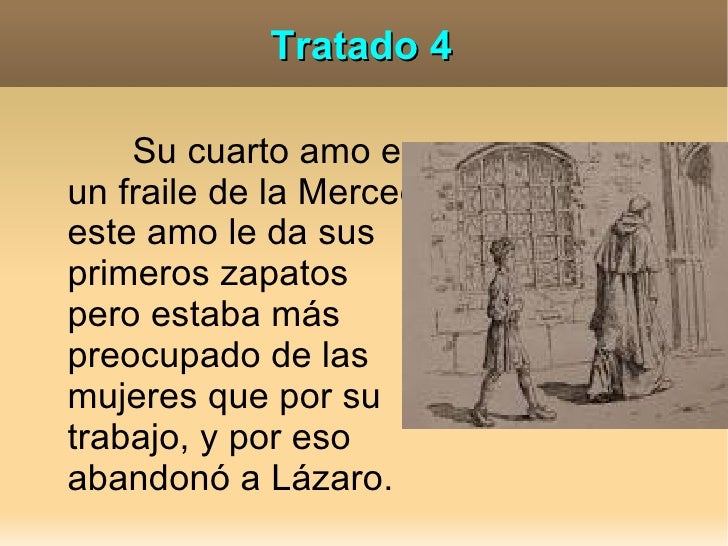
- Lazarillo de Tormes is considered one of the early examples of the genre known as picaresque novel. This is really a novella that often uses first person narrative focusing on adventure as well as opposing injustice.
- Lazarillo de Tormes (Dual-Language) (Dover Dual Language Spanish) (English Edition), 版本: Bilingual, Dover Publications, Lazarillo de Tormes (Dual-Language) (Dover Dual Language Spanish) (English Edition).
Translate Lazarillo de tormes. See Spanish-English translations with audio pronunciations, examples, and word-by-word explanations. Gta san andreas ps2.
Lazarillo De Tormes English Chapter 3
Lazarillo de Tormes is an anonymous picaresque novel written at the beginning of the 16th century which tells the story of a young boy of humble origins who works for different men in different planes of society. Lazarillo de Tormes was the first picaresque novel and the one that invented the genre.
Argument of Lazarillo de Tormes
Through a letter Lázaro sends to someone not specified in the novel, he tells his story: a boy from a very humble family, born in the Tormes river in Salamanca, who is placed in the service of a blind man after the death of his father. Clonezilla software raid 0 performance.

First part of Lazarillo de Tormes
Lázaro evolves from a naive little boy into a young man with survivor instincts. He works for many different men, and each of his jobs has a separate chapter in the book:

- Prologue
- Chapter (or treatise) 1: childhood and apprenticeship to a blind man
- Chapter 2: serving a priest who starves him; he's discovered robbing a loaf of bread while the clergyman slept and he's beaten and fired.
- Chapter 3: serving a ruined squire who is too proud to beg so he eats from the morsels Lázaro gets from begging.
- Chapter 4: serving a friar who never stopped at the convent and who makes Lázaro walk so much he breaks the soles of his shoes.
- Chapter 5: serving a pardoner who tricks people into buying bulls. Lázaro is part of the scheme, in which the pardoner arguments that anyone who thinks a bull is worth nothing must be possessed by the Devil.
- Chapter 6: serving a chaplain, spreading water through the city. This job pays enough that Lázaro can gather some savings, with which he buys some old but nice clothes.
- Chapter 7: serving a constable, although this job is short-lived because Lázaro finds it too dangerous. He goes on to work as a crier thanks to the help received by an archpriest who also gives him a house and his maid to wed, with the aim of stopping the rumors that said he was bedding his housemaid. However, after the wedding the rumors continue and Lázaro is the laughing stock of the village. At the end of the letter he says he's found happiness, even if he had to lose his honor to gain it.
Second part of Lazarillo de Tormes
A second part came out, also anonymous, came out around 1555. This one didn't have the success the first part did, because instead of maintaining the style of the first part, the author tells the story of how Lázaro turns into a tuna, and all the adventures he runs into while being a fish. At the end of this second part, Lázaro is captured in a net and turns back into a human.
There was another second part to the Lazarillo de Tormes, written by Juan Luna and published in 1620. Juan Luna was a Toledan Protestant who lived in Paris and gave Spanish language courses. When he read the second part of Lazarillo, he was so angry that he decided to write a better sequel. This second part was a success in Spain, where it was reprinted 4 times, and in FRance, where 7 different translation where available before the end of the 17th century.
Lazarillo de Tormes: The picaresque novel
Lazarillo De Tormes English Version
The great achievement of the Lazarillo de Tormes is the creation of a new genre: the picaresque novel. The picaresque novel is a parody of the ideal narrative of the Renaissance: epics, romances, sentimental novel, pastoral novel.. The contrast between these books and the social reality generated the 'anti-novel', in which the main characters are real depictions of people: the impoverished noblemen, the disinherited, the marginal converts, etc. in clear contrast with the knights and bourgeois that live in another plane of reality.
Alfred powerpack license code. The characteristics of the picaresque novel are:

- The main character is a rascal with a very low social status, an ideal counterpoint to the chivalrous knights of the Renaissance. He wants to gain a higher status but to do so he has to use illegitimate procedures like cons and lies.
- False autobiography structure: These novels are always written in first-person narrative, as if the main characters was writing about his own adventures. He plays a double role in the narration: actor and narrator.
- Determinism: Even though the rascal's aim is to better his social position, he always fails. This is why the structure of the picaresque novel is always open, there's no possible evolution for the story.
- Moralizing and pessimistic ideology: Every picaresque novel is narrated from a final perspective of disillusion; it could serve as an example of how deviant behavior is always punished, no matter what happens.
- Satiric intention and itinerant structure: Society is heavily critiqued in the picaresque novel as the rascal moves through the different social planes, working for an archetype of each social class. The rascal is a privileged spectator who is able to see the hypocrisy of each is his bosses.
- Realism, and even naturalism when describing some of the most disagreeable aspects of society.